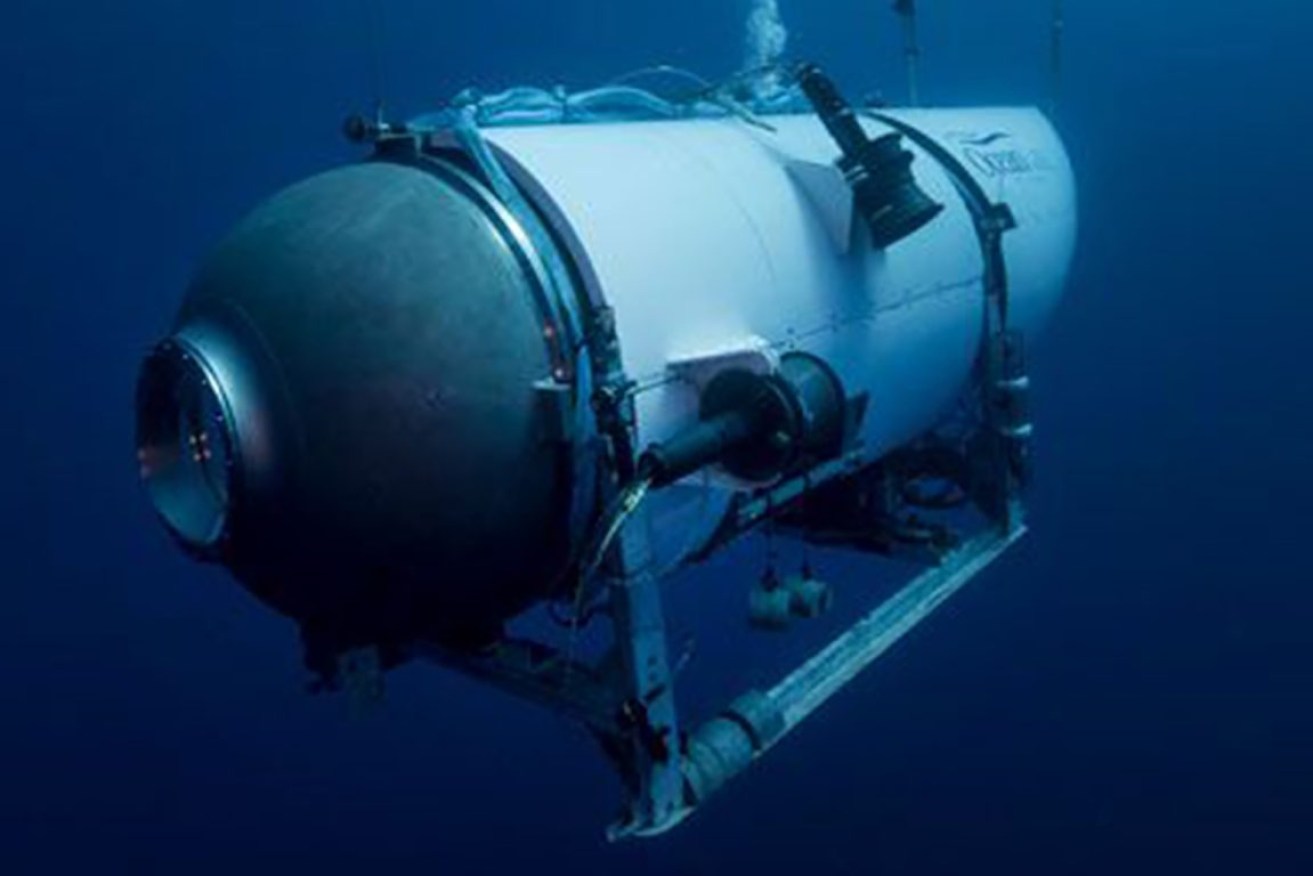Sounds detected in submersible search
Rescuers searching for a missing submersible near the wreck of the Titanic are concentrating their efforts on a remote area of the North Atlantic where a series of undersea noises have been detected.

The OceanGate Expeditions' Titan submersible imploded while descending to the Titanic wreck. Photo: OceanGate Expeditions via AP
With estimates suggesting the air supply on board could run out in a matter of hours, an international coalition of rescue teams was sweeping a vast expanse of the ocean for the Titan, which disappeared on Sunday while taking five people deep underwater to visit the wreck as part of a tourist expedition.
The US coast guard said remotely operated vehicles (ROV) were deployed underwater near where Canadian aircraft recorded the noises using sonar buoys on Tuesday and Wednesday but have not found any sign of the Titan.
US coast guard Captain Jamie Frederick said at a press conference analysis of the noises has been “inconclusive”.
“When you’re in the middle of a search-and-rescue case, you always have hope,” he said.
“With respect to the noises specifically, we don’t know what they are, to be frank with you.”
Even if the submersible is located, retrieving it presents huge logistical challenges given the extreme conditions thousands of metres below the surface.
Teams from the US, Canada and France using planes and ships have searched more than 25,900 square kilometres of open sea, roughly twice the size of the US state of Connecticut.
The 6.7-metre submersible Titan, operated by US-based OceanGate Expeditions, began its descent at 8am on Sunday.
It lost contact with its surface support ship during what should have been a two-hour dive to the Titanic.
Sean Leet, who heads a company that jointly owns the support ship, told reporters on Wednesday “all protocols were followed” but declined to give a detailed account of how communication ceased.
The submersible had 96 hours of air, according to the company, which would mean the oxygen could run out by Thursday morning.
But experts say the air supply depends on a range of factors, including whether the submersible still has power and how calm the people aboard have remained.
The wreck of the Titanic, which hit an iceberg on its maiden voyage in 1912, lies on the seabed at a depth of about 3810 metres.
Those aboard the submersible, the highlight of a tourist adventure that costs $US250,000 ($A367,000) per person, included British billionaire and adventurer Hamish Harding, 58, and Pakistani-born businessman Shahzada Dawood, 48, with his 19-year-old son Suleman, who are both British citizens.
French explorer Paul-Henri Nargeolet, 77, and Stockton Rush, founder and chief executive of OceanGate Expeditions, were also reported to be on board.
A friend of Harding, Jannicke Mikkelsen, told Reuters she was hoping for good news but was not optimistic.
“It would be a miracle if they are recovered alive,” she said.
Aaron Newman, a former Titan passenger who knows some of the missing people, told NBC on Wednesday he felt safe during his dive.
“This is not a Disney ride,” he said.
“We’re going places that very few people have been.”
If the Titan managed to return to the surface, it could still be difficult to spot it in the open water, experts said.
The submersible is sealed shut with bolts from the outside, making it impossible for those inside to escape without assistance.
If the Titan is on the ocean floor, a rescue effort would be even more challenging because of the massive pressures and total darkness at a depth of more than several kilometres.
Titanic expert Tim Maltin said it would be “almost impossible to effect a sub-to-sub rescue” on the seabed.
-AAP




